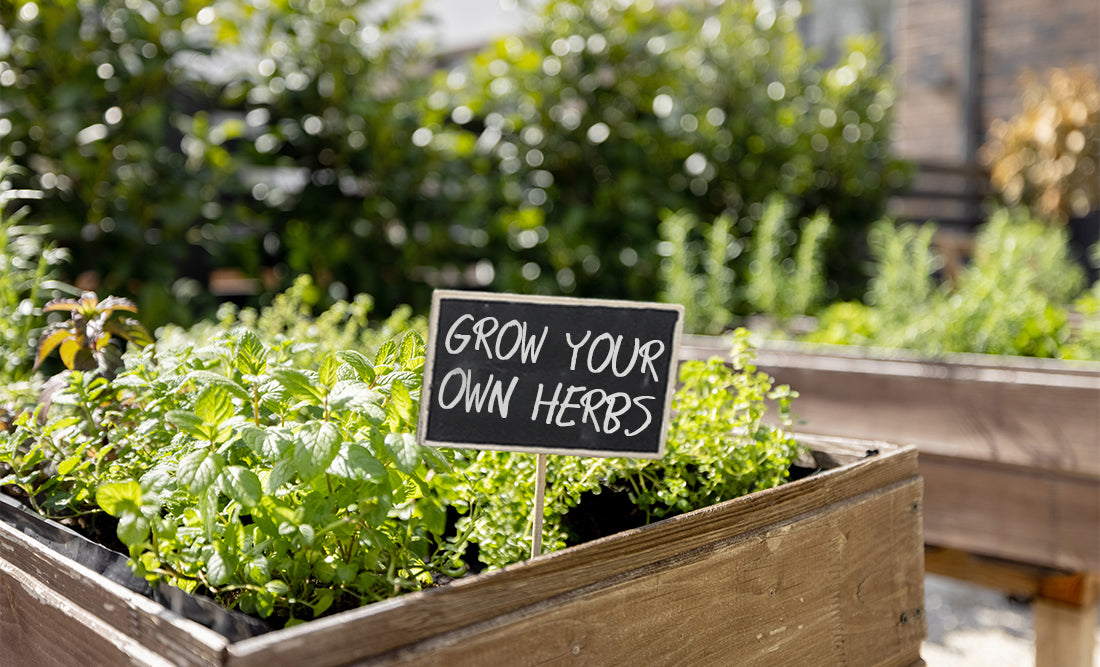In this blog post, we will equip you with the 5 tips for sowing herb seeds in your kitchen garden, ensuring your culinary herb adventure flourishes from the start!
Herb Seeds
Herb seeds are tiny powerhouses that hold the potential for a thriving herb garden. They come in fascinating shapes and sizes, waiting to awaken under the right conditions. Each seed is essentially a dormant baby plant encased in a protective shell.
5 Tips for Sowing Herb Seeds in Your Kitchen Garden
Fresh herbs add a burst of life to any dish, and having them readily available in your kitchen is a dream for many home cooks. But seed packets can seem intimidating, especially for beginners. Fear not! Sowing herbs from seed is a surprisingly simple and rewarding process. Here are our top 5 tips to get your kitchen herb garden thriving:
1. Pick the Perfect Pot: Drainage is key! Imagine little rivers flowing away from your pot to prevent your seeds from becoming waterlogged. Repurposed yogurt cups or small pots with drainage holes work well for starting seeds.
2. Start with the Right Stuff: Don't use garden soil! Think of a fluffy cloud – that's the texture you want for your seeds. Choose a lightweight seed starting mix that drains well. This provides optimal aeration and moisture retention, mimicking the perfect environment for delicate seedlings to sprout.
3. Seed Depth Matters: Those tiny seed packets hold valuable information! They usually include planting depth recommendations. Bigger seeds generally need to be buried a bit deeper than smaller ones. Following these guidelines helps ensure proper germination, just like planting a seed at the right depth helps it reach the sunlight it needs to grow.
4. Light Up Their Lives: Imagine basking in the warm glow of sunlight! Most herb seeds crave this same experience for successful germination. A sunny windowsill is ideal. If natural light is limited, consider using a grow light to supplement, giving your seeds that extra sunshine boost to reach their full potential.
5. Water Wisely: Moisture is essential, but overwatering is the enemy. Think of a consistently damp sponge you wouldn't want to wring out. A gentle misting with a spray bottle is often sufficient for seedlings.
TLC (Tender Loving Care): It refers to the various practices you implement to keep your plants healthy and thriving. Here's a breakdown of what TLC involves in the garden:
Watering: Water your herbs regularly, especially during hot summers. Strive for soil that remains consistently moist without becoming waterlogged. Stick your finger in the soil! If it feels dry up to the first knuckle, it's time to water.
Feeding: Feed your herbs with a balanced organic fertilizer every few weeks during the growing season, following the specific instructions on the fertilizer product. Consider using homemade compost or neem cake for a natural approach.
Harvesting: Regularly harvest your herbs throughout the season to encourage bushier growth. Pinch off leaves or stems just above a node (the point where leaves emerge from the stem).
Conclusion: A Greener World, One Seed at a Time
Beginning with a little planning and the simple tips outlined above, you can cultivate a thriving herb haven right in your kitchen. The satisfaction of snipping fresh herbs for your meals is an unmatched reward, not to mention the environmental benefits.
Casa De Amor wholeheartedly supports this journey towards a greener world, one seed at a time. We believe, as you do, that nurturing a connection with nature through gardening fosters a sense of environmental responsibility. It's a beautiful ripple effect – a thriving herb garden in your home translates to a greener community, and collectively, these efforts contribute to a healthier planet. So let's get planting! Remember, every seed sown is a tiny promise of a greener tomorrow.

